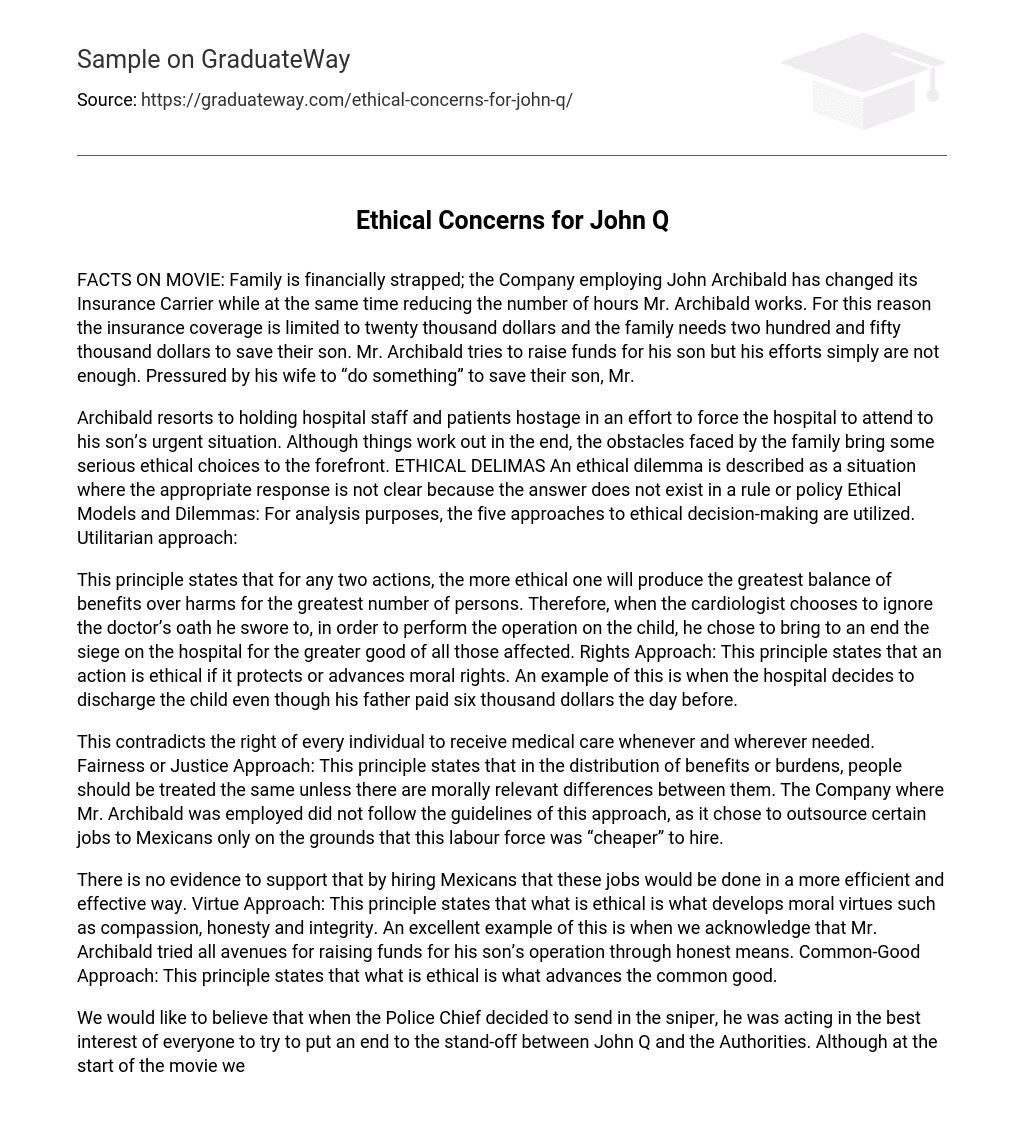FACTS ON MOVIE: Family is financially strapped; the Company employing John Archibald has changed its Insurance Carrier while at the same time reducing the number of hours Mr. Archibald works. For this reason the insurance coverage is limited to twenty thousand dollars and the family needs two hundred and fifty thousand dollars to save their son. Mr. Archibald tries to raise funds for his son but his efforts simply are not enough. Pressured by his wife to “do something” to save their son, Mr.
Archibald resorts to holding hospital staff and patients hostage in an effort to force the hospital to attend to his son’s urgent situation. Although things work out in the end, the obstacles faced by the family bring some serious ethical choices to the forefront. ETHICAL DELIMAS An ethical dilemma is described as a situation where the appropriate response is not clear because the answer does not exist in a rule or policy Ethical Models and Dilemmas: For analysis purposes, the five approaches to ethical decision-making are utilized. Utilitarian approach:
This principle states that for any two actions, the more ethical one will produce the greatest balance of benefits over harms for the greatest number of persons. Therefore, when the cardiologist chooses to ignore the doctor’s oath he swore to, in order to perform the operation on the child, he chose to bring to an end the siege on the hospital for the greater good of all those affected. Rights Approach: This principle states that an action is ethical if it protects or advances moral rights. An example of this is when the hospital decides to discharge the child even though his father paid six thousand dollars the day before.
This contradicts the right of every individual to receive medical care whenever and wherever needed. Fairness or Justice Approach: This principle states that in the distribution of benefits or burdens, people should be treated the same unless there are morally relevant differences between them. The Company where Mr. Archibald was employed did not follow the guidelines of this approach, as it chose to outsource certain jobs to Mexicans only on the grounds that this labour force was “cheaper” to hire.
There is no evidence to support that by hiring Mexicans that these jobs would be done in a more efficient and effective way. Virtue Approach: This principle states that what is ethical is what develops moral virtues such as compassion, honesty and integrity. An excellent example of this is when we acknowledge that Mr. Archibald tried all avenues for raising funds for his son’s operation through honest means. Common-Good Approach: This principle states that what is ethical is what advances the common good.
We would like to believe that when the Police Chief decided to send in the sniper, he was acting in the best interest of everyone to try to put an end to the stand-off between John Q and the Authorities. Although at the start of the movie we are convinced John Q was motivated by the Rights and Fairness and Justice approaches, the outcome achieved at the end of the movie was totally Utilitarian as the inequity in the health care service was made quite evident to the wider community at large and should therefore serve as the impetus for the health officials to do something about it.





